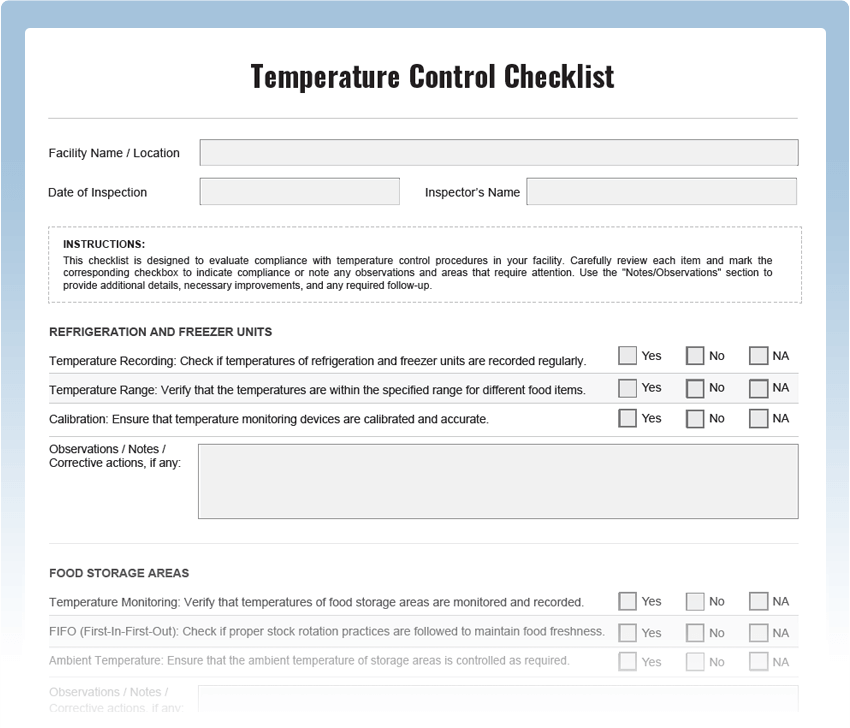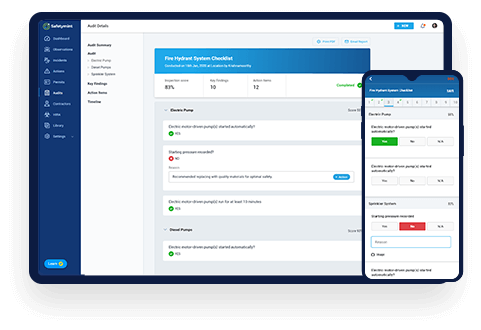Temperature Control Inspection Checklist
Ensure safe food storage and handling with our comprehensive Temperature Control Checklist. This free PDF template is designed to assess and monitor the proper control and maintenance of temperatures in your food storage and preparation areas. By conducting regular temperature control inspections, businesses can prevent foodborne illnesses, preserve food quality, and comply with food safety regulations.
Digitize this Checklist on Safetymint
- Create unlimited, customized checklists
- Add Actions, with automated reminders
- Works seamlessly with or without internet
- Access via web browsers, mobile or tablets

What is a Temperature Control Checklist?
A Temperature Control Checklist is a systematic tool used to evaluate the adherence to temperature control measures in food storage and preparation areas. It includes a series of checkpoints designed to inspect various aspects of temperature management, such as refrigeration, hot holding, cooling, and reheating processes. Regular temperature control inspections are essential for ensuring that perishable foods are stored and handled at safe temperatures, reducing the risk of bacterial growth and contamination.
Key Areas to Inspect in a Temperature Control Checklist:
- Refrigeration: Verify that refrigeration units maintain temperatures at or below the recommended level.
- Hot Holding: Ensure that hot food is held at safe temperatures above the minimum required.
- Cooling Procedures: Assess the cooling process to ensure rapid and safe temperature reduction.
- Reheating: Verify that reheated food reaches the required internal temperature.
- Thermometer Calibration: Check the calibration of food thermometers for accuracy.
- Cold Chain Management: Review the procedures for maintaining the cold chain during food transport.
Common Temperature Control Checklist Findings:
Frequent issues found during temperature control inspections include:
- Improper Refrigeration: Refrigerators not maintaining proper cold temperatures for food storage.
- Inadequate Hot Holding: Food not held at the required hot holding temperature.
- Slow Cooling: Insufficient cooling practices leading to extended time in the temperature danger zone.
Temperature Control Checklist Best Practices:
- Frequent Monitoring: Regularly monitor and record temperatures of food storage and holding units.
- Training and Awareness: Provide training to staff on proper temperature control procedures.
- Corrective Action: Take immediate corrective action if temperature deviations are detected.
- Equipment Maintenance: Regularly inspect and maintain temperature control equipment.




